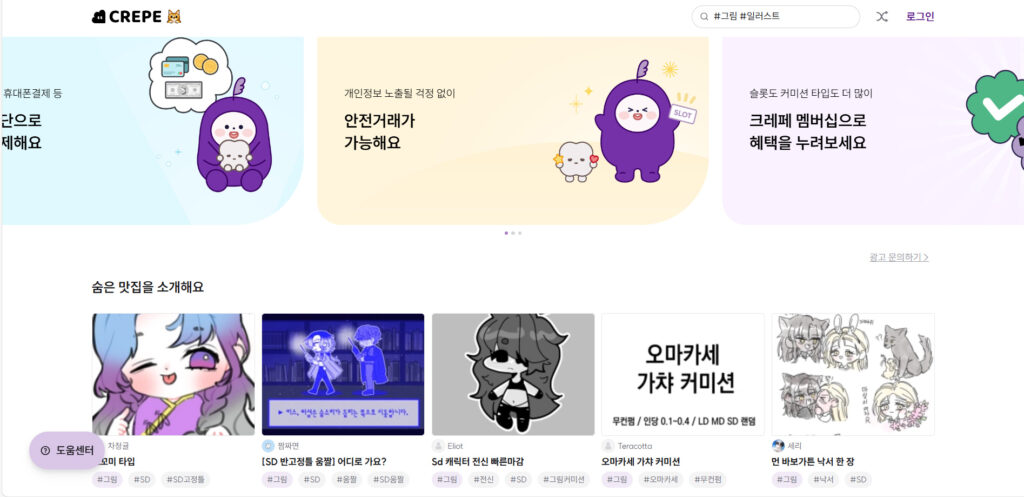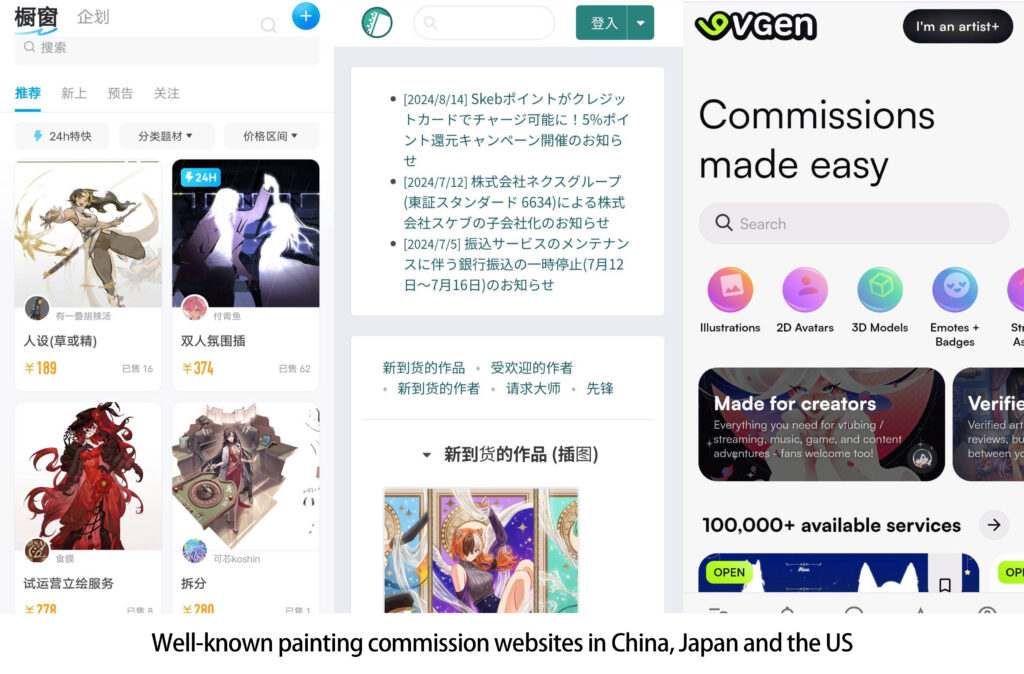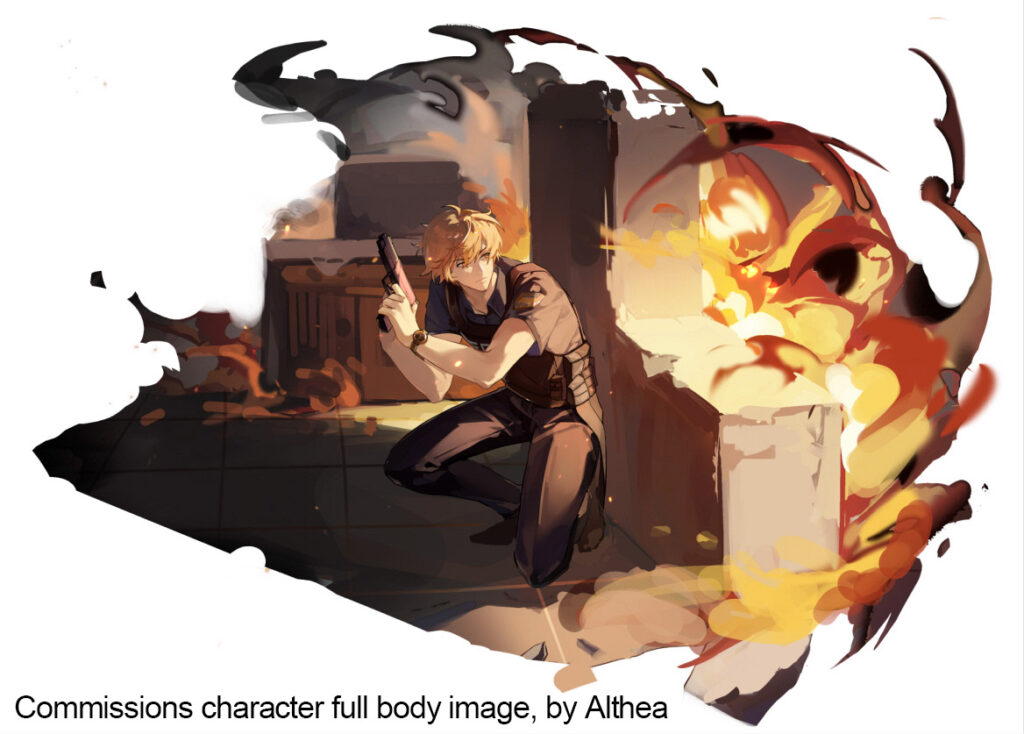As the number of original character creators continues to grow, the drawing commission industry is booming. More and more artists are taking on original character commissions, drawing OCs for creators through various commission websites.
Yun Jiang, who is studying heritage and museology at university, has been creating OCs for eight years. She told me that at first she had no intention of paying for a painting commission.
‘I didn’t understand the process and thought it would be difficult for unfamiliar artists to understand my OCs and that they wouldn’t be able to paint the atmosphere.’
But soon after, she saw a commissioned image that a friend had got on the Korean commissioning website crepe, and after finding out the price Yun Jiang became interested. ‘Apart from the fact that communication requires the use of Korean translation software, crepe’s prices are very low. Therefore, even if the commission didn’t reach my inner goal, these losses were within my affordable range.’

Korean commissioning website crepe
After receiving her first commissioned image, Yun Jiang started to do painting commissions on other websites. She enjoys having artists draw images that appear in her own novels, and also enjoys giving artists free rein after learning about OCs, and she is often inspired by different artists’ interpretations.
‘The painting commission industry is undoubtedly a promising one. The fact that even creators like me who weren’t initially optimistic about it are attracted to it is a testament to that.’

Lin, a 28-year-old game-testing engineer, says more and more people are indeed experimenting with painting commissions. ‘Although the website will protect the interests of both parties, with more and more artists of varying levels joining the site, it’s difficult for creators to filter out artists who meet their requirements.’
He still has some concerns about the development of the painting commission industry, where many transactions operate based on a default rule, but some of the rules are actually unjust. For example, an artist has the right to refuse to modify an image more than once, but this can easily lead to all sorts of problems if the artist isn’t informed in advance of how many times he or she can modify the image.

When I asked Althea, an artist who accepts painting commissions as a profession, whether she recognised Lin’s view, she cited the case of minors buying painting commissions. Minors spend money on painting commissions, but their parents don’t approve of such spending and will communicate with the artist on the website to ask for a refund.
‘It’s a complete disaster for the artist. They’ve spent time and effort to draw the image, only to have to refund it, and may even be verbally abused by the other parent because they feel that they’re a scammer for collecting money with the image.’
Althea has seen no shortage of similar incidents, and there have even been instances of minors pretending to be adults to avoid payment. As a result, Althea believes that although the painting commission industry is currently growing relatively rapidly, its future trends are not necessarily stable and there is a need to continue to work on industry regulation.
As well as refunds, Althea describes a number of other grey areas that have sprung up with the painting commission industry.
‘In addition to the original character circle, there is another kind of original circle on the Internet. The way to make money within this circle is that an artist draws images at one or two per month, and only paying members within the artist’s fanbase have access to these images.’
Althea tells me that some well-known artists can pay thousands of RMB for a yearly membership, and their fanbases often number in the hundreds. What’s frightening is that such a large sum of money doesn’t generate taxes.
At the end of the day, Althea laments, ‘I understand the intensity of the work of artists in the original circle, who have to draw their work on time, but I’d prefer that the industry as a whole develops a relevant system rather than relying solely on the self-consciousness of the artists.’
This website is part of a student project. While the information on this website has been verified to the best of our abilities, we cannot guarantee that there are no mistakes or errors.
The material on this site is given for general information only and does not constitute professional advice.
The views expressed through this site are those of the individual contributors and not those of the website owner. We are not responsible for the content of external sites.


